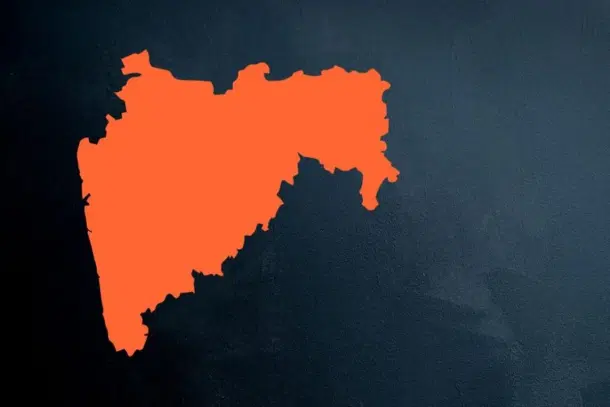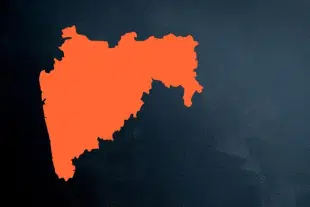Maharashtra
Mahayuti’s Mega Sweep Across Maharashtra Leaves MVA Allies Struggling To Withstand The Wave
Girish Avadhany
Nov 26, 2024, 12:38 PM | Updated Nov 29, 2024, 03:40 PM IST
Save & read from anywhere!
Bookmark stories for easy access on any device or the Swarajya app.


The Maharashtra (MH) assembly election results have delivered a thumping majority for the Mahayuti while the Maha Vikas Aghadi (MVA) has failed to make any significant gains let alone be an alternative to the incumbent government.
The results were not surprising but the numbers sure were. The Mahayuti partners delivered an unprecedented strike rate of 76 per cent against the abysmal 15.6 per cent strike rate of the MVA partners.
How does the region-wise tally look?
The MVA allies performed worse in the regions they expected to be their best.
Sharad Pawar's Nationalist Congress Party (NCP-SP) managed to secure only eight seats in its traditional stronghold of West Maharashtra. While the Sharad Pawar faction of the NCP lost significant ground, the BJP quietly dominated, securing 28 wins in the region and emerging as the party with the highest tally.
The Ajit Pawar faction outperformed the Sharad Pawar faction in the West Maharashtra region by securing 15 seats.
The most interesting point remains that the Eknath Shinde's Shiv Sena scored a handsome nine seats and has made inroads into the traditionally Pawar-dominated bastion by winning one seat more than the NCP-SP faction.
Shiv Sena (UBT) and Congress had to settle for merely two seats each. The Maratha-dominated region with the sugar cooperatives has overwhelmingly chosen the Mahayuti alliance.
The region also has a strong presence of the Kunbis and the OBC communities such as Lodh, Badgujar, Dangari, Boyar and Telangi. The Mahayuti’s pro-OBC moves such as a dedicated OBC ministry and free hostels for OBC students have resonated well.
The Vidarbha region delivered a stupendous mandate for the Mahayuti too. The Mahayuti alliance partners secured 48 seats with a whopping 77 per cent strike rate in the Vidarbha region. The BJP again emerged as the largest party with 38 seats. Congress' key failures came from this region where they managed to scrape through only 9 seats.
The Congress in Vidarbha focused excessively on narrativising the farmers’ distress about soybean MSP and inflation. However, the Mahayuti’s promises—free electricity for farmers, Rs 6,000 MSP per quintal for soybeans, and 24-hour solar-powered electricity—have effectively countered the farmers‘ distress narratives.
The OBC-dominated region has once again placed its faith in the BJP and Mahayuti. The MVA partners secured only 13/62 seats with a disastrous 20 per cent strike rate. The region dominated by Kunbi, Banjara, Mali and Telis castes has rallied behind BJP and Mahayuti strongly yet again.
The Marathwada was no different than Vidarbha for the Mahayuti. The alliance secured 40/46 seats with an overwhelming strike rate of 87 per cent. The region saw a balanced performance from the Mahayuti partners with BJP securing 19, SHS 13 and NCP 8 seats respectively.
The Manoj Jarange Patil factor which was constantly utilised by the MVA, had little to no impact on the polling behaviour.
The Marathwada water grid, industrial parks and the promise to develop 45,000 new farmer-friendly rural roads by the Mahayuti have overridden the excessive emphasis on the caste factor that the MVA placed. The phenomenon marks a major synthesis in the rural and urban Maratha voting behaviour convergence which is more reliant on development than caste lines.
North Maharashtra too was no different. Of the 35 seats in the region, the Mahayuti secured 34 seats by leaving only 1 seat for the MVA which was won by the INC. This farm-dominated region which is known for soybean, onion, cotton and also horticulture has decisively voted for the Mahayuti. The river linking projects taken up in the North MH region by the Mahayuti government along with the farm welfare schemes like Namo Shetkari Yojana, PMKSY and various agricultural projects have helped the Mahayuti to secure the trust of the farm-dominated region.
The Konkan region, traditionally a SHS stronghold, has delivered a strong mandate for the Mahayuti. The question about the real Shivsena probably got settled here when the SHS secured 16 seats and the SS(UBT) could manage only 1 seat. The traditional Sena hold has clearly given the mandate as to which Sena truly represents Balasaheb’s ideals and values.
The Mahayuti secured 35/39 seats and emerged as a dominant alliance again.
The Mumbai region was the only kind to SS(UBT) where it secured 10 seats. The BJP emerged as the largest party in this region too with 15 seats. SHS secured 6 seats and slightly suffered a setback in the region. But the INC scored a mere 3 seats in the region against its expectations of securing at least 9-12 seats.
How do the political scores look?
The election featured numerous alliance fight seats, especially involving factions of new parties relying on the people’s mandate to assert their legitimacy as the original party.
The Shivsena secured 36 wins in direct contests against the SS(UBT), which managed only 13 victories in similar head-to-head battles. The NCP outperformed the NCP-SP in 28 direct fights, while the NCP-SP emerged victorious in only 7 such contests.
The INC’s poor performance continued, with just 11 wins in straight fights against the BJP, which dominated with 63 victories.
The SS(UBT) struggled against the BJP, losing 27 direct contests and securing only 3 wins.
The NCP-SP faced a complete rout in direct contests with the SHS, winning just 1 seat, while the SHS triumphed in 7 such matchups.
How did the narrative play out?
The MVA relied heavily on the caste fault lines by repeatedly attacking Devendra Fadnavis as a Peshwa and various other caste-related jibes. The INC especially focused on the Muslim, Farmer and Dalit equation which fell flat on the ground. The Marathwada and Vidarbha plan of the MVA relied on pitting the Marathas and Dalits against the OBCs to achieve a voter split. This was vehemently rejected by the people who chose to go with the “Ek Hai toh Safe hai” and the “Batenge Toh Katenge” campaign slogans that were given by the BJP and Mahayuti.
The farmers’ distress was one of the key narratives that the INC and MVA propagated throughout the election.
However, the farmers of Maharashtra found it difficult to believe the MVA owing to their past actions and performance. It was the Mahayuti that came up with pro-farmer schemes such as Free electricity to farmers, an increase in incentives for milk powder from Rs 3 to Rs 6, extensive work on the irrigation front with projects such as Nal Ganga and Vain Ganga, Marathwada Water grid and River linking projects for North Maharashtra.
The narratives put forth by the MVA lacked substance, and the tainted history of the INC further compounded the challenges for MVA allies, making it difficult to convince voters to favour the MVA over Mahayuti.
The other key element is the Mukhyamantri Majhi Ladki Bahin Yojana which promised a sum of Rs 2100 per month to the women aged 21-60. The increase in women voting by an average of 6 per cent in the 2024 election could be also attributed to the women’s appreciation of the scheme. Particularly in the poor and semi-poor districts, BJP has performed extremely well which could again be attributed to the Ladki Bahin scheme.
The Mahayuti has registered a clean sweep in Dhule, Jalgaon, Wardha, Gondia, Nanded, Hingoli, Jalna, Raigad, Latur, Beed, Satara, Sindhudurg and Kolhapur. This is an interesting piece of data because the districts in which the Mahayuti has swept are not limited to any particular region. The districts are cumulative of all the regions of Maharashtra which confirms that the people of Maharashtra have risen beyond the petty divisions that the MVA had made the prime focus of their campaign.
The Mahayuti has received overwhelming support from all cohorts—the OBC, SC/ST, farmers, women and youth.





